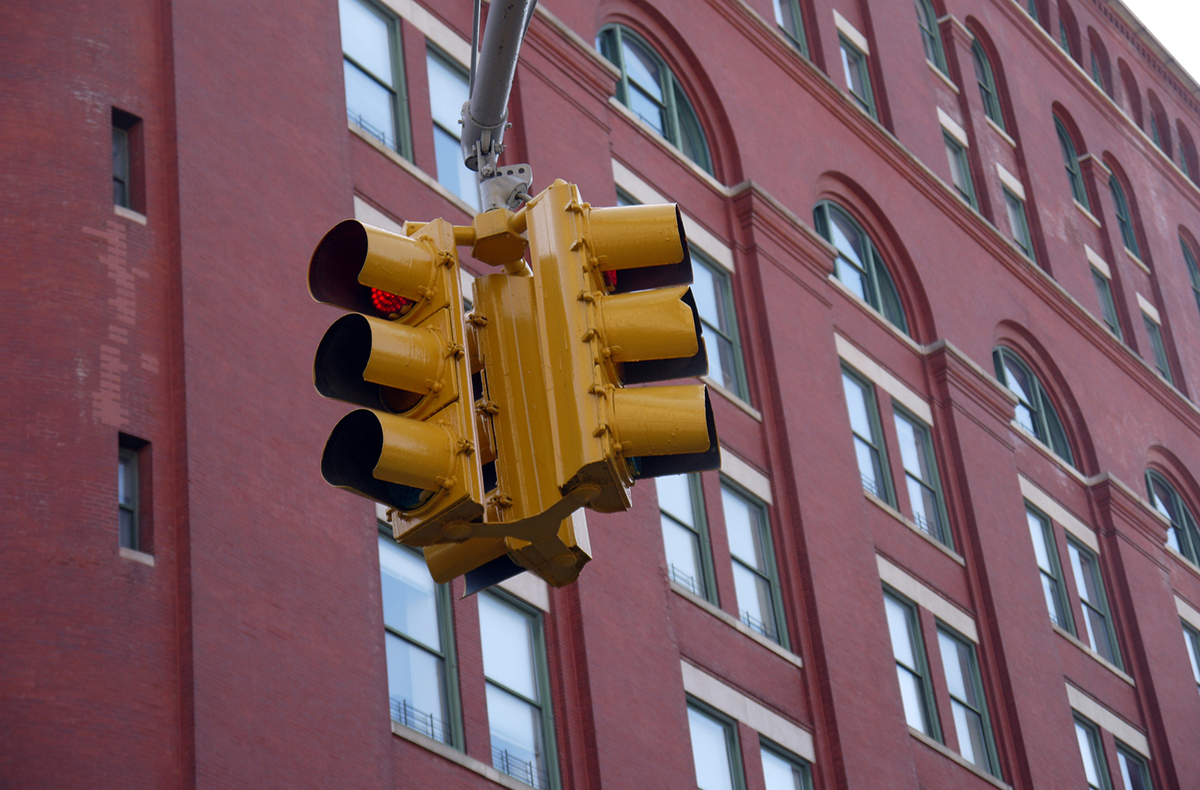What Does a Blinking Yellow Arrow Mean?
Three-hundred-and-fifty traffic lights around the state—including three in Boston— are getting an upgrade in the form of a never-before-used yellow flashing arrow to let drivers know when they can safely make a left turn at a given intersection.
The roughly $3 million project, headed by MassDOT, is meant to curb the amount of accidents that occur at intersections that typically have solid-yellow, green, and red arrows indicating when a driver can cut across traffic. According to statistics provided by the transit agency, 25% of all crashes that happen at traffic signals statewide are attributed to left-turning vehicles, and can lead to serious injuries.
By adding a new “Flashing Yellow Arrow” signal, or FYA, which will be displayed on a signal head after a solid-green arrow, MassDOT officials are hoping to reduce that crash rate by at least 20%.
“Through the use of this new technology, we’re confident the turning movements will be clearer to drivers, and the intersection will be safer as a result,” said MassDOT Acting Secretary Frank DePaola. “The flashing yellow arrow is a better indicator to drivers that they must yield the right-of-way to oncoming traffic.”
Already, two of the blinking yellow signals have been installed in Lenox and Littleton, but state officials announced that additional FYAs would start going up in 140 cities and towns in the new year. A bulk of the installations will be operational in the spring of 2015 for traffic signals that only need new signal heads, transit officials said. A second round of installations, which are still in the design phase and will require significant upgrades to the electrical and wiring components of the signal heads, will begin in 2016 and 2017.
“The purpose is to update the technology, and replace it with something that has a message that is more clear and consistent,” said MassDOT spokesman Mike Verseckes.
Verseckes said with the current “green balls” that are accompanied by “Yield on Green” signs, or traditional green arrows that allow for left turns, drivers can get “mixed messages” while on the road.
“The [FYA] technology will help resolve that,” he said. “In this instance, it’s not necessarily a case of mixed messages; rather, it gives an intersection more flexibility by allowing drivers intending to turn left to do so when safe, instead of waiting for the green arrow, because as we all know, running a red light—or arrow—is illegal.”
Massachusetts is one of the last states to introduce the FYAs to their state-owned traffic configurations.
As part of the announcement, MassDOT put together a visual to get drivers acquainted with the changes, in the event that they come across an FYA and don’t know what it means:
A complete list of the communities that will benefit from the new statewide safety initiative, which is being partially funded by the Federal Highway Administration, can be found below.
The first list shows the cities and towns that will begin seeing changes in 2015. The second, shorter list is a snapshot of intersections and locations that are in the early stages of their detailed design, and will be advertised in 2015 or 2016 so that construction can begin in 2016 or 2017, according to transportation officials:




